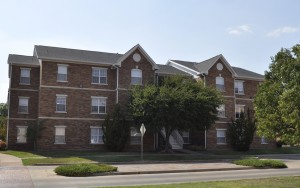
MSU administrators will go before the Board of Regents in November to discuss building a new campus residence hall.
Dr. Keith Lamb, associate vice president, and Michael Mills, director of housing, went before the Board in August to make the initial proposal. A representative of Brailsford and Dunlavey, a nationally recognized campus housing authority, accompanied them.
They proposed a $15 million project that, if approved, would be completed by the Fall 2014 academic year.
They argued that demand for on-campus housing was exceeding supply. In August, Lamb said, the occupancy rate was 103 percent. That means some potential students were turned away.
Brailsford and Dunlavey conducted a market analysis on housing with a few hundred MSU students last spring, asking how much they would pay for a certain type of room. The firm’s conclusion: the university should build a residence hall that’s nicer than Pierce and Killingsworth, but less expensive than Sundance or Sunwatcher.
“We need to plan for our future,” said Dr. Jesse Rogers, university president. “Every time we’ve built a dorm, our enrollment has gone up.”
Since the building of Sunwatcher Village in 2003, administration has been playing catch-up, trying to meet student demand for housing. The demand has grown every year, said Mills. He currently estimates housing demand at 350 beds.
“Your housing system has become a victim of its own success,” the Brailsford and Dunlavey representative said during the meeting. “Demand in housing has overcome supply.”
He said one trend at MSU is a growing freshman class, which is having an unpredicted effect on housing – it’s pushing the older students out of dorms.
“The upper-class students are starting to move toward the off-campus apartments,” the representative said.
Given that the project is completed, Pierce and Killingsworth would become even more heavily occupied by freshmen.
“The upper-class students were taking up more of the traditional-style beds,” the representative said. “An initiative has been put in place that will reduce the number of beds that are being taken away from freshmen. As a result of that, the freshmen constraints will be addressed.”
He also said to expect an increase in the number of junior and senior students who are looking for on-campus housing.
“This will be more expensive than Pierce or Killingsworth, but less expensive than the apartments on campus,” Mills said.
The rooms proposed to the Regents were semi-private, single- or double-occupancy quarters. Each room would have its own bathroom, but stovetops and some other amenities would be shared with other occupants on the floor.
Room and board charges for the potential occupants of the residence hall would fund about $12 million of the project. MSU would need to come up with $3 million in funds to complete the building.
The prospective project also includes plans to move the housing administration office into the new residence hall, freeing up space for classrooms.
“We need to use (the housing office) as academic space, and it would be more logical to have our office on the ground floor of the new residence hall,” Mills said.
“This is a win-win,” said Dr. Howard Farrell, vice president of university advancement and student affairs.
Another outcome of the proposed residence hall is earning MSU the designation as a ‘residential’ institution, as opposed to a ‘commuter’ institution. This would give the university a boost in its efforts to recruit new students.
“We have more and more people moving here,” said Dr. Jesse Rogers, university president. “We are becoming a more residential campus.”
Mills said he encouraged current and prospective students to look into living on campus while attending MSU – it engenders more student activity and involvement. It also helps beginning students “transition into the college experience.”
RAs and a 24/7 police force should also make students feel safer than they would living off-campus.
“We like to think we’re very safe,” he said.
















